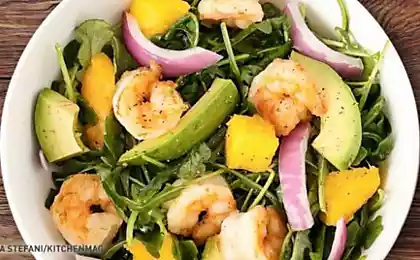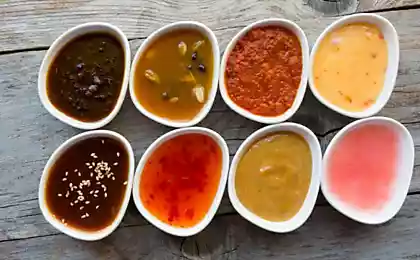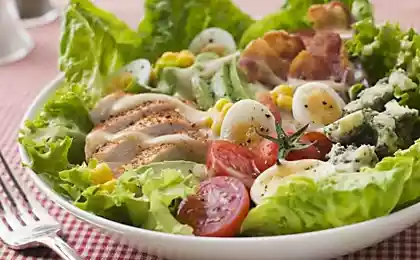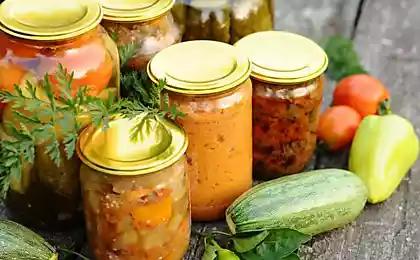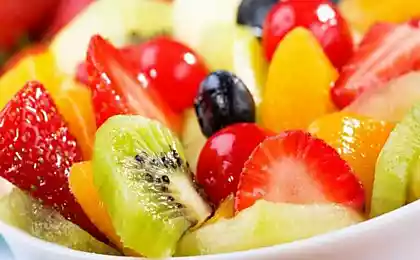516
Prepare homemade salad dressings

The word “refueling”, perhaps, to the Russian ear unusual and even somewhat funny. Meanwhile, the English word for something without which none of the lettuce is not possible in principle. Salad dressing (the word “sauce” in this context, I do not like) are able to combine a few disparate ingredients into a coherent whole, and to spoil a good idea, so the importance of such tasks as the preparation of the salad dressing, should not be neglected. Alas, or rather fortunately, the universal recipe here is not: difficult? Nothing of the sort! Salad dressings akin to the designer – and after reading this manual, you will be able to “collect” the gas station (or if you prefer the sauce) to any salad that will prompt your imagination.
But first, as usual, a small introductory. At first when cooking the filling it is best to start from the classic, long-proven proportions. For me, this classic is the following ratio: 3 tbsp oil + 1 tbsp vinegar or lemon juice + salt + black pepper
In result, you will have simple dressing “vinaigrette”, which is suitable to absolutely any salad (not just to the vinaigrette). If desired, you can add a little (1 tbsp) soy sauce, Worcestershire sauce, honey or mustard, and you make an original dressing specifically for that salad that you have prepared. For example, honey is good at stations where there is ham, aged cheese or other ingredient with the umami flavor, mustard – salad greens with a mild taste (for example, iceberg or lettuce), soy sauce – salad with cucumbers, sesame oil and any Asian ingredients, and Worcestershire sauce – salad with roast beef.

The rule is to try any gas station. In a salad the taste is balanced with other ingredients, so understanding what you have got, best to dip in the dressing and lettuce, try it.
Before you fill the salad, mix again all the ingredients until an emulsion is especially true if you have already finished dressing had a little stand. I usually prepare the salad dressing in a bowl and whisk it with a fork until smooth, you can also cook the dressing in a small jar, several times stirred up and ready.
Do not fill the salad if you are ready to serve it to the table – otherwise it is badly melted, it was quite a sight. If you desperately need to make the salad in advance – put all ingredients in a bowl, prepare the dressing separately and mix just before serving.
Most salad dressings stored in the refrigerator for at least several days. The conclusion is that, even two: first, prepare the filling “for the future”, and secondly, do not throw away the excess, they'll come in handy.
Well, now moving on to talking about the basic ingredients for salad dressings.
Main ingredients

Oil isthe Base of most dressings vegetable (melted butter or melted fat are used much less, but still not so rare that they are not to mention) oil. Most of all – the olive: its mild, bitter taste and is equally well suited to vegetables and leaves, and everything else that you used to put in salads. Appropriate are sunflower, mustard, pumpkin, sesame, and other oils, but they impose on the taste more “aggressive” mark – you need it or not is up to you. If, on the contrary, you need a delicate oil with almost no taste – suitable grape seed oil. For salads usually use oil first cold pressed (Extra Virgin), unrefined – in a word, that which is not good for frying, and Vice versa.
VinegarVinegar in salad dressings is responsible for the acidity and for the formation of the emulsion, thereby filling literally envelops every leaf of your salad. Often use wine vinegar – white or red, in addition they fit balsamic (though it will color your salad is not always pleasant dark color), sherry, cider (very similar to a regular Apple) and others, and the use of flavored vinegars that you can make the number of possible combinations approaches infinity. Of course, synthetic vinegar is absolutely not good.
JuiceJuice fruit, berries and even vegetables is also relevant in salad dressings: lemon juice (or lime) you can replace the vinegar (and I must admit I like this version more), juice, other citrus fruits or berries bring a spicy touch. Others use unusual and exotic seasoning. The main thing – do not overdo it: it is hardly necessary to add more than 1 teaspoon of juice per serving of the filling, so the juice is supposed to have an intense and distinct taste. If your wild imagination tells you to add to the dressing the juice of cucumber or celery, ask her to listen to reason.
Additional ingredients
MustardMustard is one of the traditional components of salad dressing. Most often used Dijon mustard (that is not our the eyesore, and less spicy European), but in some cases, the appropriate granular or even flavored. Makes the filling a little more dense, adds spice and flavor. If you want to start with classic combinations – use 1 teaspoon of mustard 3 tablespoons of olive oil and 1 tablespoon of lemon juice. Then you can move on to the experiments.
Honeyis Especially good in the salad where is found the fifth taste (minds) – in other words, if your salad is jerky, roast beef or Mature cheese, honey, he will benefit. Use honey in small amounts, balancing the excessive sweetness of the juice of a lemon, and mix the filling until smooth.
Saucessuch as soy (by the way, goes well with honey), a few drops of which will give your salad a distinct Asian flavor. After experimenting with other prepared sauces (the most obvious but not the only one of which – Worcester), you can find your “secret ingredient” that will enhance the flavor of any filling.

YogurtYogurt (of course, plain, no additives) – a great base for salad dressings. It goes well with vegetables and herbs, sets off the flavor of fish, seafood and meat. The acidity of yogurt helps to form the taste, different from the one that gives the dressing based on olive oil – however, if desired, yogurt and butter can be mixed, and this will agree, opens up a lot of space for creativity.
Sour cream
Sour cream, in my opinion, a little less suited for salad dressings than yogurt.
And is used the same way. Exception – summer salad of fresh vegetables and herbs from the garden, where the cream itself is a gorgeous station.
Finishing touchesVegetables (and fruits!)Vegetables can be a component of a salad (which is understandable), and salad dressing. For example, quite often in the dressing and added garlic – crushed or finely chopped. In addition to (or instead of) it you can use shallots, or regular Yalta red onion, chopped up and added to the dressing at the stage of mixing all of its components. Other variations on the theme – chillies, ginger, seeds and nuts, pear, pomegranate and so on. Stand dressings, which are based on vegetables – for example, roasted eggplant or peppers, pureed in a blender.
GreensChopped fresh herbs harmoniously fit into any gas station, this can not even doubt. Fennel salad with summer vegetables or fish, Basil to the tomatoes, cilantro for salad in Asian style, parsley, chervil and onions used for anything at all. If no fresh herbs, use dried, e.g., oregano.
The eggUsually the egg (or yolk) is used as a starting point for creating mayonnaise and other sauces, which are prepared on a similar technology (e.g., Dutch). But in some cases (see the classic Caesar salad) egg itself can play the role of salad dressing. Such are the cases.
Spices
Spices – the essential finishing touch to any gas station. At least, your dressing need to season with salt and black pepper, among other spices give preference to those which will not turn your lettuce in the dominance of one taste.
SoIf you want to refill something that was not included in the list above – add safely. For example, finely grated hard cheese like Parmesan, finely chopped bacon, or more exotic ingredients can be just the brick, which is lacking in your constructor. And don't be afraid to experiment: once, absolutely unexpectedly for myself I found that an ideal dressing for salad with shrimp, you should add a spoonful of whipping cream.
Pick a. Add. Mix. Try. Season. And serve. published
Author: Alexey Onegin
Source: www.arborio.ru/zapravki-dlya-salatov/

